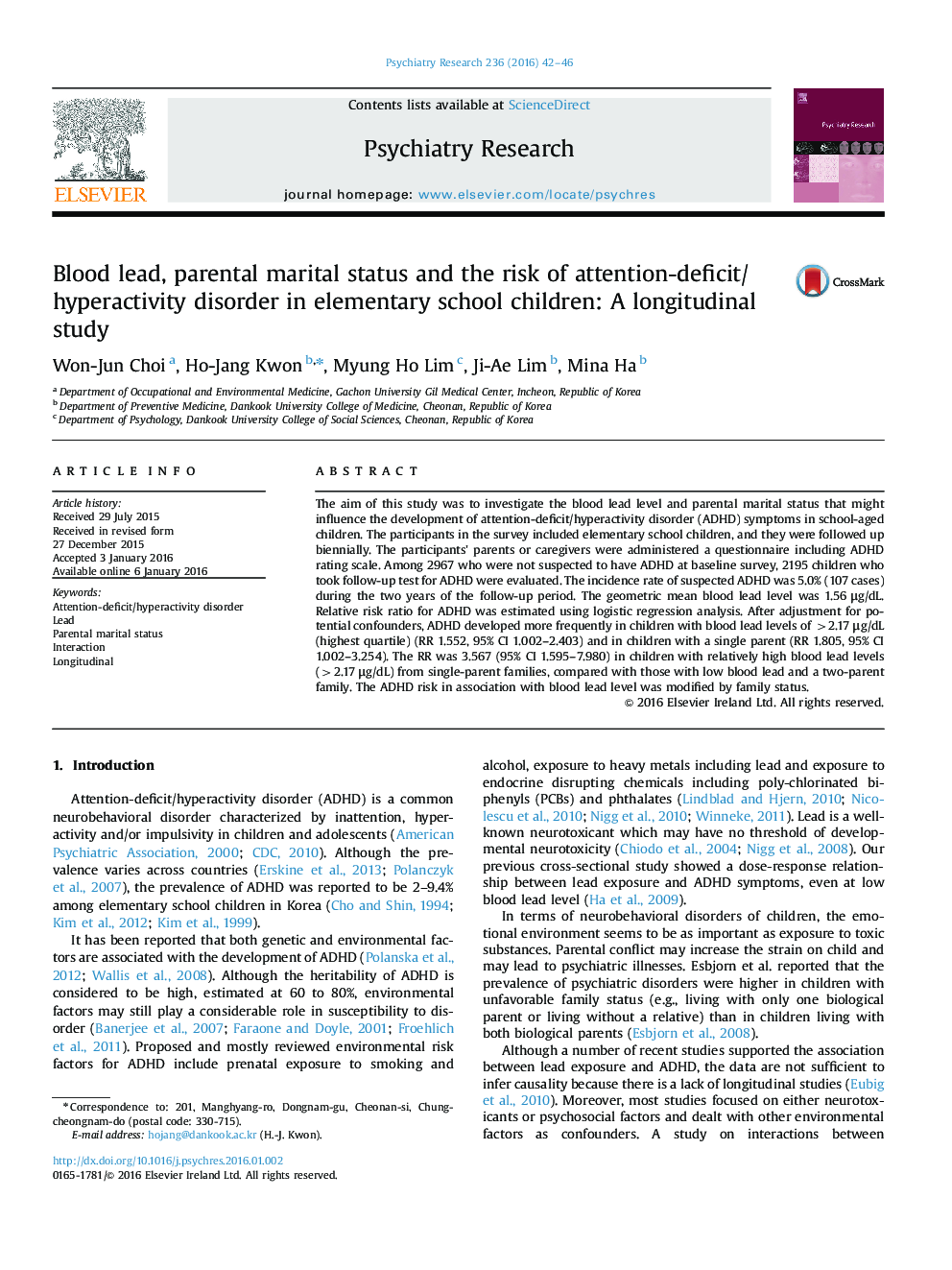| Article ID | Journal | Published Year | Pages | File Type |
|---|---|---|---|---|
| 6813641 | Psychiatry Research | 2016 | 5 Pages |
Abstract
The aim of this study was to investigate the blood lead level and parental marital status that might influence the development of attention-deficit/hyperactivity disorder (ADHD) symptoms in school-aged children. The participants in the survey included elementary school children, and they were followed up biennially. The participants' parents or caregivers were administered a questionnaire including ADHD rating scale. Among 2967 who were not suspected to have ADHD at baseline survey, 2195 children who took follow-up test for ADHD were evaluated. The incidence rate of suspected ADHD was 5.0% (107 cases) during the two years of the follow-up period. The geometric mean blood lead level was 1.56 μg/dL. Relative risk ratio for ADHD was estimated using logistic regression analysis. After adjustment for potential confounders, ADHD developed more frequently in children with blood lead levels of >2.17 μg/dL (highest quartile) (RR 1.552, 95% CI 1.002-2.403) and in children with a single parent (RR 1.805, 95% CI 1.002-3.254). The RR was 3.567 (95% CI 1.595-7.980) in children with relatively high blood lead levels (>2.17 μg/dL) from single-parent families, compared with those with low blood lead and a two-parent family. The ADHD risk in association with blood lead level was modified by family status.
Related Topics
Life Sciences
Neuroscience
Biological Psychiatry
Authors
Won-Jun Choi, Ho-Jang Kwon, Myung Ho Lim, Ji-Ae Lim, Mina Ha,
